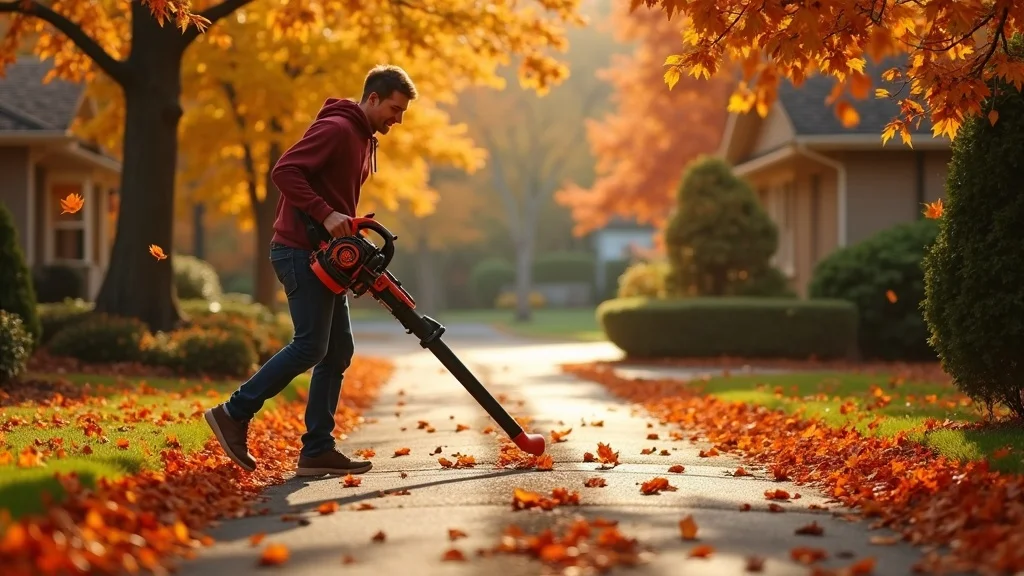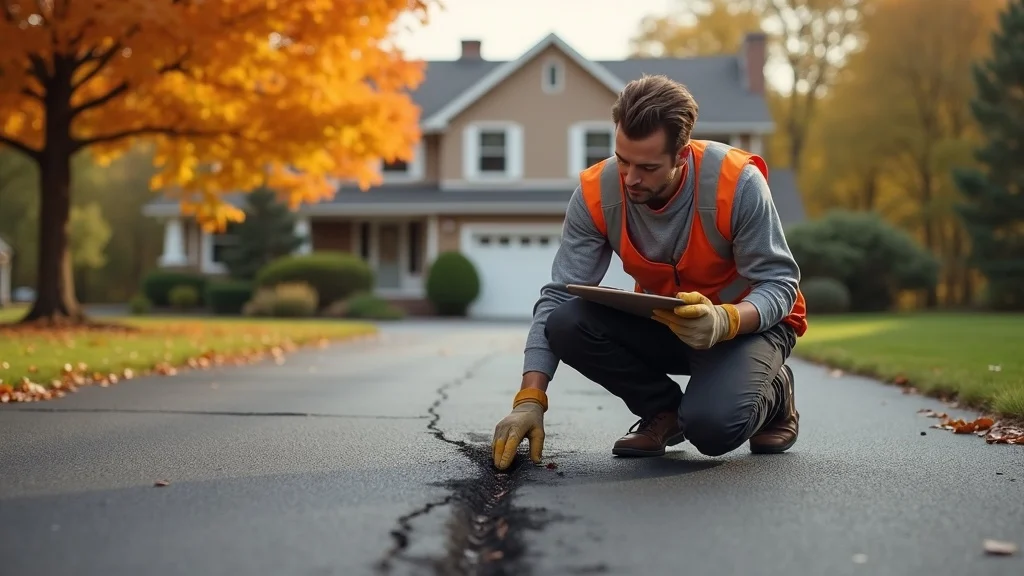Startling Fact: Did you know that unattended fall leaves can shorten the lifespan of asphalt driveways by up to 30%? This surprising statistic highlights why understanding how tree leaves, branches, and yard cleanup affect your driveway isn’t just helpful—it’s essential. In Pennsylvania and other areas with heavy leaf drop and erratic autumn storms, asphalt driveways are at greater risk than most homeowners realize. Read on to uncover the science behind leaf and branch damage, practical leaf removal solutions, and expert-tested maintenance strategies to protect your driveway and boost curb appeal.
What You’ll Learn About How Leaves Damage Asphalt Driveway
- The science behind how leaves damage asphalt driveways
- Why autumn leaves and branch debris can accelerate asphalt deterioration
- Practical steps for leaf removal and effective asphalt maintenance
- Warning signs of fallen leaves affecting your driveway or parking lot
- When to handle issues yourself and when to call a professional
A Startling Fact: The Underestimated Power of Autumn Leaves on Asphalt
“Research shows that unattended fall leaves can shorten the lifespan of asphalt driveways by up to 30%, especially in climates with frequent freeze-thaw cycles.”
Autumn leaves and falling branches create more trouble for your asphalt driveway than you may realize, especially in regions like Pennsylvania where heavy leaf drop, windstorms, and clogged storm drains are common. As more leaves fall and accumulate on driveways and parking lots, they trap moisture and block sunlight, accelerating cracks and stains. Neglecting these yearly cleanup chores not only affects asphalt maintenance but can also make your property a candidate for major pavement repair down the road. Understanding the risks and best practices for leaf removal now will help reduce costly repairs and loss of curb appeal later.

How Leaves Damage Asphalt Driveway: Key Mechanisms to Know
Moisture Retention and Wet Leaves: A Recipe for Deterioration
- Wet leaves prevent water from evaporating, causing prolonged moisture exposure.
- Moisture penetrates cracks, leading to freeze-thaw damage.
Fallen leaves aren’t just an eyesore—they’re a threat to the integrity of your asphalt. When wet leaves build up on your driveway, they form a dense, water-logged mat that keeps the surface damp long after rainfall. This is especially problematic during fall leaves season and times of year when precipitation is high. Prolonged moisture seeps into tiny cracks in the asphalt pavement, and as temperatures drop, water freezes and expands. This freeze-thaw cycle causes existing cracks to grow and new ones to appear, accelerating the need for pavement repair. If you don’t remove leaves on a regular basis, this cycle repeats and can lead to costly major pavement repair projects before they should ever be necessary.
In addition to leaf buildup, root intrusion from nearby trees can also cause significant damage beneath the surface. If you’re noticing cracks or uneven areas caused by roots, you may find it helpful to review practical solutions in this guide on repairing driveway damage from tree roots, which covers quick fixes and preventative strategies.

Leaf Stains, Tannins, and Plant Residue: How Fallen Leaves Affect Asphalt Surfaces
One of the subtler—but equally damaging—effects of fallen leaves is the formation of leaf stains on your driveway’s surface. As leaves decay, they release organic acids and tannins that seep into the asphalt, causing dark blotches and discoloration that can be permanent. These plant residues not only detract from the look and curb appeal of your home, but over time, the acids can weaken the asphalt binder, reducing the driveway’s structural strength and lifespan. Frequent accumulation of these stains, especially when not addressed promptly, will require more aggressive cleaning—or even professional treatment—to reclaim your driveway’s original appearance. Autumn leaves and other plant debris left on surfaces for too long can also attract moss and algae, contributing to further breakdown and slip hazards.
Blocked Drainage and Clogged Gutters: Fall Leaves Accelerate Wear
- Accumulating autumn leaves and branches can plug drains, increasing surface runoff and erosion.
Another hidden danger of falling leaves is their tendency to block gutters, storm drains, and water channels. In parking lots and driveways, plugged drainage leads to standing water and surface runoff that erodes asphalt and amplifies freeze-thaw damage. When drainage is poor, debris accumulates along pavement edges and creates prime conditions for puddles, moss growth, and asphalt weakening. If ignored, these issues can eventually necessitate more extensive and expensive pavement repair or even a significant repair project. Homeowners and property managers should make it a point to remove leaves often and inspect drainage during and after leaf drop.
Root Intrusion and Overhanging Branches: The Extended Effect of Yard Debris
- Roots seek out cracks and moisture, causing surface upheaval and cracks.
- Falling branches cause physical damage to asphalt surfaces.
Yard debris isn’t limited to what falls on the driveway’s surface. Roots from nearby trees are notorious for seeking out cracks and moisture trapped by leaves and other debris. Over time, these roots push up from below, lifting and cracking the asphalt—creating not only tripping hazards but costly structural problems. Overhanging branches, especially during storms, can snap and impact the driveway, causing chips, gouges, and accelerated wear that affect asphalt surfaces. Regularly trimming branches and being vigilant during periods when leaves fall heavily will mitigate some of these long-term threats and extend the life of your driveway or parking lot.
The Impact on Curb Appeal, Parking Lot Safety, and Asphalt Longevity
How Fallen Leaves Diminish Curb Appeal
- Unsightly stains and neglected debris reduce property value.
Beyond pure functionality, a driveway blanketed with fallen leaves and leaf stains reflects poorly on your property’s appearance. Untended driveways and parking lots often send the message of neglect and can lower curb appeal significantly. Those dark blotches, uneven surfaces, and scattered debris are highly visible from the street and can even influence a potential homebuyer’s first impression or a tenant’s decision to rent. Investing in regular asphalt maintenance ensures your driveway looks inviting, while neglected leaf buildup not only creates work for future you but can lead to a reduction in overall property value over time. Keeping your drive clear and well-maintained does more than look good—it’s a sound investment.

Parking Lot & Driveway Hazards: Slippery Wet Leaves and Accident Risks
Parking lots and driveways that are covered in wet leaves become slip hazards for both pedestrians and vehicles. The decomposing layer of organic material turns slick, especially after rain or fog, increasing the risk of falls, skids, or minor fender benders. In commercial parking lots, this elevates liability hazards for property owners, as both customers and employees are at risk. Addressing leaf removal on a regular basis and keeping edges, drains, and entryways clear is a key step in maintaining a safe and accessible property throughout the fall and winter months. Consistent autumn maintenance isn’t just about looks—it’s a matter of safety and risk management.
Signs That Fallen Leaves and Branches Are Affecting Your Asphalt Driveway
- Visible leaf stains and dark blotches
- Persistent standing water or blocked drainage
- Noticeable cracks, bumps, or visible root intrusion
- Moss, mold, or algae growth after wet leaves accumulate
Not sure if your driveway or parking lot is in trouble due to fallen leaves and debris? Watch out for early warning signs, including visible stains and blotches from leaf tannins, persistent areas of standing water (which signal poor drainage), and the appearance of new cracks or raised areas caused by root growth. Once moss, mold, or algae take hold—often after a season of wet leaf cover—you’ll know your asphalt is being compromised. Early action is key: regular inspections and prompt cleanup can help avoid a major pavement repair project. If these symptoms appear on a regular basis, or after a wet season, consider scheduling an inspection and cleaning with an experienced asphalt maintenance company.

Proven Steps for Leaf Removal and Preventive Asphalt Maintenance
Recommended Fall Yard Cleanup: Raking, Blowing, and Edge Maintenance
- Effective leaf removal methods: rakes, blowers, and vacuums
Proactive leaf removal is your best defense against surface damage and decay. Schedule cleanups on a regular basis during peak leaf fall and after storms to prevent debris buildup. Use a sturdy rake for smaller areas or a power blower/vacuum for larger driveways or parking lots. Don’t forget the edges: leaves and branches often collect along driveway edges, making them prime areas for moisture retention and root intrusion. For best results, remove leaves before rain, and dispose of them properly to keep drains and storm gutters clear. Seasonal maintenance now means less work—and fewer costly repairs—later.

Trimming Overhanging Branches and Preventing Falling Leaves
- Regularly trim trees to minimize debris and prevent root problems.
To control both falling leaves and the long-term threat of root intrusion, regularly trim tree branches that extend over your driveway or near its edges. By managing tree canopy, you’ll not only limit how many leaves collect on the surface, but also reduce the volume of branches and twigs that may come down during a storm. Regularly assess tree health near parking lots and driveways, as dying trees drop leaves more quickly and aggressively seek moisture, leading to deeper root penetration. Professional tree trimming every few years helps prevent unforeseen clean-up emergencies in autumn and keeps your driveway in better condition.
Inspecting and Clearing Drains to Protect Your Asphalt Driveway
- Maintain clear drainage to prevent standing water during fall leaf drop.
Leaves, twigs, and debris are frequent culprits behind clogged drains and gutters. Inspect all water channels, storm drains, and downspouts regularly—especially after a heavy leaf fall or storm event. Use a hose or gutter scoop to remove blockages and flush away accumulated silt. Paying attention to drainage not only keeps water moving away from your driveway but also decreases the likelihood of freeze-thaw cycles and slab settling. This simple maintenance is a critical yet often overlooked step in comprehensive asphalt maintenance, extending the lifespan of your pavement and minimizing the chances of needing an expensive repair project later.
DIY Asphalt Maintenance vs. When To Call a Professional
- When routine cleaning is enough
- Signs you need a pro: persistent leaf stains, cracks, root push-up, drainage issues
- Benefits of a professional fall inspection
Routine leaf removal, drainage checks, and simple crack fills can often be handled with a do-it-yourself approach—especially if you’re on top of regular maintenance and catch issues early. However, persistent leaf stains, noticeable cracking, root upheaval, or drainage problems mean it’s time for professional help. Asphalt experts offer comprehensive inspections, targeted cleaning, sealing, patching, and preventive care such as sealcoating and edge treatment. Bringing in a pro before minor symptoms turn into major pavement repair can save you substantial money and stress. For business owners and commercial properties, regular fall inspections are also a smart way to protect liability, minimize repair costs, and keep your parking lot in prime shape.

How Lenny’s Asphalt Can Help Prevent and Repair Leaf Damage
- Inspection, cleaning, and debris removal
- Crack sealing and patching for water and root intrusion repair
- Preventive maintenance: sealcoating, edge treatment, surface cleaning
Lenny’s Asphalt provides tailored solutions for every stage of driveway protection. Their services include professional inspection to identify leaf and root-related issues, thorough asphalt and debris cleaning, and crack sealing to halt water infiltration. Whether you need preventive sealcoating, edge treatments to prevent grass and weed encroachment, or serious repairs for a neglected pavement, Lenny’s team has you covered. If you’re worried about autumn leaves, falling branches, or visible stains, schedule a preventive maintenance assessment to keep problems at bay. Don’t wait until you need a major pavement repair project—take advantage of expert help before small issues grow larger.
Table: Common Causes of Asphalt Driveway Damage From Leaves and Yard Debris
| Problem | Effect on Asphalt | DIY Solution | Professional Service |
|---|---|---|---|
| Wet Leaves | Traps moisture, stains, accelerates crack formation | Rake/blow leaves regularly, sweep up residue | Professional cleaning, sealcoating |
| Blocked Drainage | Standing water, increased freeze-thaw damage | Clear storm drains and gutters often | Drainage assessment & repair |
| Root Intrusion | Cracks, uplifted and uneven surfaces | Trim trees, remove encroaching roots if minor | Root barrier installation, crack filling, repaving |
| Leaf Stains/Tannins | Permanent discoloration, binder weakening | Prompt scrubbing, mild cleaner, pressure washing | Stain removal treatment, surface reconditioning |
| Falling Branches | Physical surface damage, chips, and gouges | Prune tree limbs above driveways | Surface patching, structural repairs |
Expert Advice: Quotes on Asphalt Maintenance and Falling Leaves
“Leaf removal is just as important as sealing your driveway in extending asphalt life.” – Asphalt Maintenance Specialist
FAQs: How Leaves Damage Asphalt Driveway and Effective Solutions
What damages asphalt the most?
Water, unattended leaves, oil spills, and UV exposure are top contributors to asphalt damage. Organic debris accelerates moisture retention and the freeze-thaw cycle, weakening the pavement over time. Regular cleaning and protective sealcoating are vital for long-term durability.
How to stop leaves blowing into the driveway?
Trim overhanging trees, use landscaping barriers or fences to block wind, and keep up with regular raking or blowing. Install windbreaks where feasible, and maintain sharp lawn and driveway edges to minimize the opportunity for leaves to collect.
How to get leaf stains off a driveway?
Sweep the area to remove loose debris, then scrub stains with a stiff broom and biodegradable cleaner. Light pressure washing can help with stubborn discoloration, but for persistent tannin stains, professional treatment may be required to prevent permanent marks.
How to fix a damaged asphalt driveway?
Promptly patch visible cracks with asphalt filler, regularly apply sealcoat, and ensure drainage channels are clear. For more severe damage—including major cracks, large patches, or root uplift—professional resurfacing or more thorough repairs may be needed.
People Also Ask: Additional Insights on Leaves and Asphalt Driveways
What damages asphalt the most?
Repeated exposure to moisture, lack of asphalt maintenance, regular accumulation of plant debris, and ongoing freeze-thaw action are the leading causes of deterioration in asphalt driveways and parking lots.
How to stop leaves blowing into the driveway?
Install small fences or shrubs as windbreaks, keep lawn and driveway borders sharply edged, and prioritize frequent leaf cleanup for best results against leaf buildup.
How to get leaf stains off a driveway?
Aggressive scrubbing, soaking with cleaning solutions, and in some cases, professional stain removal are required to eliminate stubborn tannin or organic acid stains from longstanding fallen leaves.
How to fix a damaged asphalt driveway?
Assess whether light patching is feasible, or if large-scale crack filling and resurfacing are required. Professionals can provide free estimates on more serious repairs or those beyond basic DIY fixes.
Key Takeaways: How Leaves Damage Asphalt Driveway
- Ignoring yard debris can accelerate asphalt deterioration.
- Moisture retention, root intrusion, and stains are key risks.
- Proactive leaf removal and yard maintenance significantly extend driveway lifespan.
- Expert inspection can prevent minor issues from becoming costly repairs.
Learn from a visual demo showcasing the impact of leaves, water, and debris on driveway surfaces and how to protect your investment.
Expert walkthrough of seasonal yard cleanup, preventative measures, and maintenance techniques to combat leaf-related asphalt damage.
Protect Your Asphalt Before It’s Too Late
Call Us at (610) 366-9406 to schedule your fall inspection, leaf removal, or asphalt driveway repair!
If you’re interested in taking your driveway maintenance to the next level, explore the full range of asphalt paving solutions and expert advice available from Lenny’s Asphalt. Whether you’re looking for advanced repair techniques, preventative care, or inspiration for your next project, you’ll find valuable resources to help you protect and enhance your property for years to come. Dive deeper and discover how professional paving strategies can make a lasting difference in your home’s curb appeal and long-term value.


